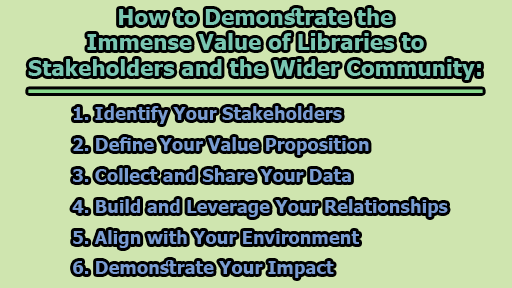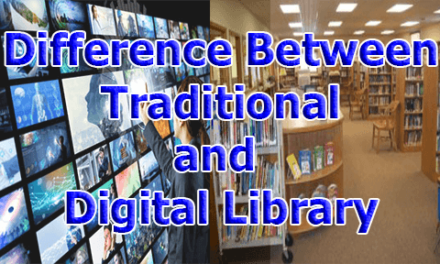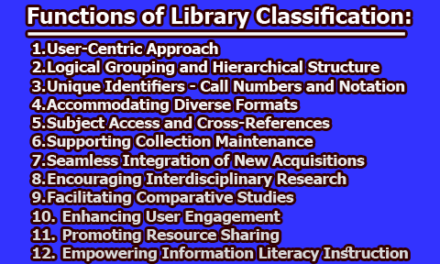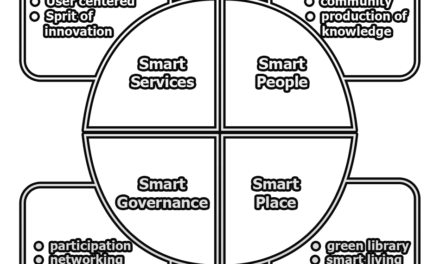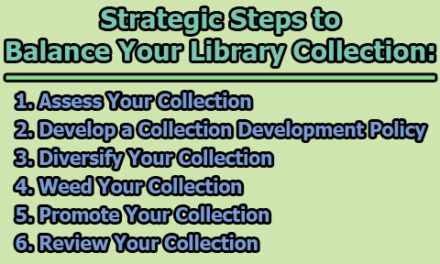How to Demonstrate the Immense Value of Libraries to Stakeholders and the Wider Community:
Libraries are often seen as the quiet sanctuaries of books and knowledge, but they are much more than that. They play a pivotal role in our communities by providing social, educational, and economic benefits. However, it’s crucial to convey the value of libraries to stakeholders, especially in times of budget constraints and evolving needs. To achieve this, libraries must adopt a strategic approach. In this article, we will explore how to demonstrate the immense value of libraries to stakeholders and the wider community.
1. Identify Your Stakeholders: The first step in showcasing the value of libraries is identifying your stakeholders. These are individuals or groups who have an interest in or influence over your library. They can include patrons, staff, funders, partners, policymakers, media, and the general public. To effectively advocate for your library, it is vital to understand the needs, expectations, and perspectives of these stakeholders. Surveys, interviews, focus groups, and other data collection methods are invaluable tools to gather feedback and insights. This knowledge enables you to tailor your messages, strategies, and evidence to cater to their interests and concerns.
2. Define Your Value Proposition: A well-crafted value proposition serves as a concise statement explaining what your library does, how it benefits stakeholders, and what sets it apart from other options. It should answer the crucial question: why should someone care about or support your library? Your value proposition should be rooted in your library’s mission, vision, and goals, as well as the preferences and needs of your stakeholders. This proposition can also guide your communication and marketing efforts, helping you articulate your library’s unique value.
3. Collect and Share Your Data: Data is an indispensable asset when demonstrating your library’s value. It provides tangible and measurable evidence of your library’s outcomes and impacts. You can gather data from a variety of sources, including usage statistics, service evaluations, user testimonials, case studies, stories, and anecdotes. Frameworks like the Logic Model, the Social Return on Investment (SROI), or the Library Value Calculator can help quantify and communicate your data effectively. Sharing your data with stakeholders in a clear, compelling, and relevant manner through charts, graphs, infographics, reports, newsletters, or presentations is essential in demonstrating your library’s impact.
4. Build and Leverage Your Relationships: Building and nurturing relationships with stakeholders is a pivotal part of showing the value of your library. These relationships help establish trust, credibility, and influence. Libraries can build and leverage these relationships through networking, collaboration, partnership, and engagement on various platforms and channels. Social media, blogs, podcasts, webinars, and other media can be used to showcase library services, programs, events, and achievements. Seeking and providing feedback, recognition, and appreciation to stakeholders, as well as involving them in library initiatives, can further solidify these relationships.
5. Align with Your Environment: Libraries operate within a dynamic external environment influenced by political, economic, social, technological, and cultural trends and issues. To effectively convey the value of your library, it is essential to align with this environment by being responsive, adaptable, and proactive. This involves ongoing scanning, monitoring, and analysis of the external context to identify opportunities and challenges. Frameworks and tools such as SWOT analysis, PESTLE analysis, or Scenario Planning can assist in planning and strategizing for your library’s future.
6. Demonstrate Your Impact: The impact of a library is its long-term and lasting effect on stakeholders and the community. To illustrate your library’s value, you must demonstrate its impact by showing how it supports the goals and priorities of your stakeholders. This can be achieved by aligning your library’s outcomes and impacts with the indicators or metrics valued by stakeholders. For instance, the United Nations’ Sustainable Development Goals (SDGs), the American Library Association’s (ALA) Public Library Association (PLA) Project Outcome, or the International Federation of Library Associations and Institutions’ (IFLA) Library Map of the World can be used as reference points. Stories, testimonials, or case studies can be particularly effective in humanizing the library’s impact and connecting on an emotional level with stakeholders.
In conclusion, libraries are invaluable assets that offer far more than just books and information. To prove their worth to stakeholders and the wider community, libraries must employ a strategic approach that identifies stakeholders, defines their value proposition, collects and shares data, builds and leverages relationships, aligns with the environment, and demonstrates their impact. By following these steps, libraries can ensure that their value is recognized and appreciated, even in challenging times of budget cuts and evolving priorities.

Assistant Teacher at Zinzira Pir Mohammad Pilot School and College

